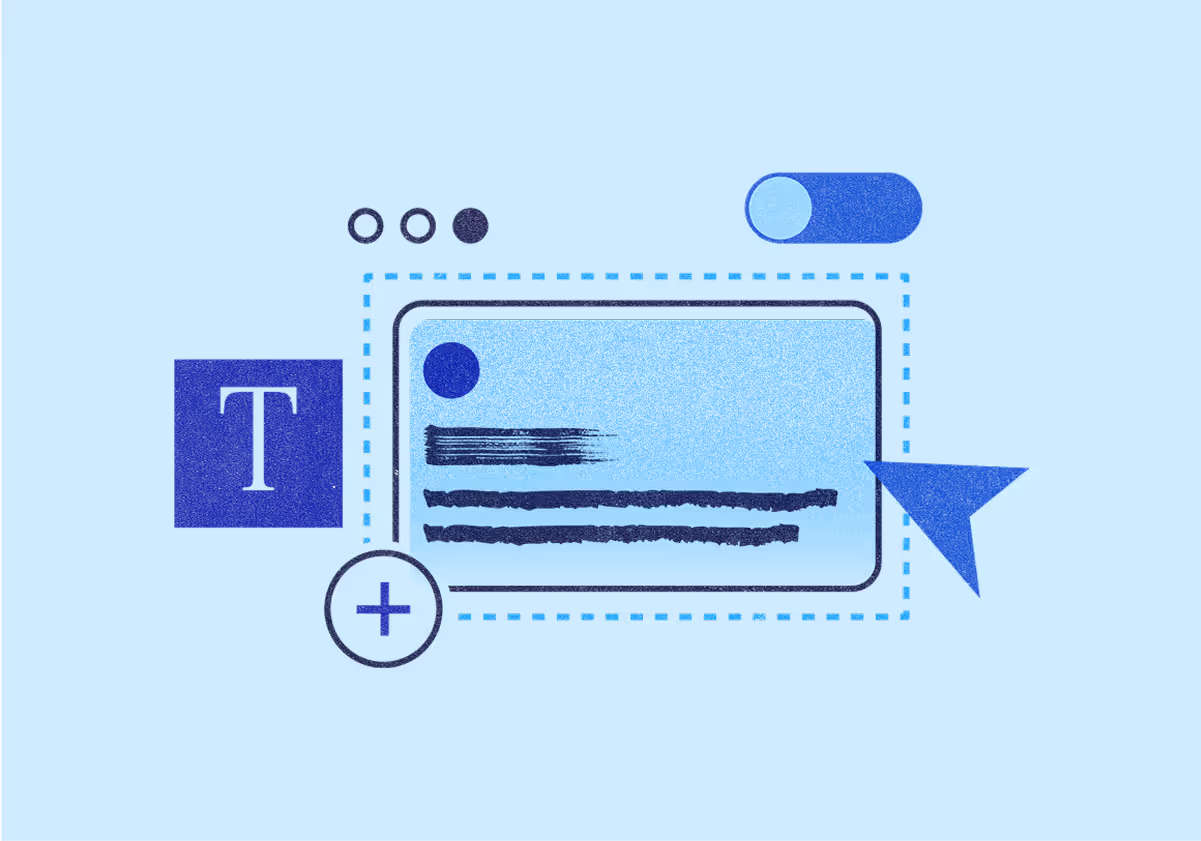Dave Rogenmoser
September 8, 2021
From Zero to Inbox Hero: 9 Email Subject Line Best Practices
Struggling to get the email open rates you want? Use these email subject line best practices to engage your subscribers and generate more click-throughs.

Your subject line is the gateway to your email. If it’s a flop, recipients simply won’t click through, making the rest of your email completely redundant. You might have written the best email in the world, but if the subject line lets it down, nobody’s going to see it. Avoid your email body gathering dust by ensuring your subject lines do the job they’re supposed to - catch attention and encourage action.
Step into the spotlight: subject line styles and examples that stand out
Email subject lines come in all shapes and sizes. The style you choose will completely depend on the type of email you’re sending, your target audience, and what you want to achieve with the email.
Promoting a sale on your latest product line? You’ll want to get straight to the point instead of using a cryptic subject line that doesn’t tell recipients what they’ll find once they open your email. Introducing your services to a potential client? You want to stand out in their inbox with a short and sweet subject line. So what kind of subject lines are out there in the wild?
1. FOMO, scarcity, and urgency
Example: “Last chance for 20% off”
Injecting a good old-fashioned sense of urgency into your subject lines can make readers take action:
- FOMO (the Fear of Missing Out): nobody wants to feel like they’re last to show up to the party and they’ll take action if it feels like they’re missing out
- Scarcity: use your subject line to hint that there are only a few spaces or products left or that you only have a limited number of something available
- Urgency: people who feel like they’re running out of time will take action. Hint that there are only a few hours left to grab a deal in your subject line
2. Personal
Example: “New lines in swine added to our Piggin’ Sale, Dave!”
Who doesn’t like to hear (or read) their own name? And beyond using a recipient’s first name, you can also include other personal information that you have on them, like a recent event they attended or their last purchase. In 2021, 80% of marketers surveyed by Litmus were doing just this to make their emails stand out in inboxes and create unconscious connections with recipients.
3. Question
Example: “Are you ready for the weekend?”
Questions invoke curiosity. The more relevant the question is, the more likely a recipient is to click through to find out the answer. Adding a question to your subject line not only gives readers a peek into what’s inside but can also open up a dialogue.
4. Lists and numbers
Example: “15% Off Everything In Our Summer Sale”
Numbers stand out in an inbox full of words. Using numbers in percentages or in the form of a list in your subject line can encourage readers to click through, especially if it provides an insight into exactly what they’ll get on the other side.
5. Action
Example: “Sign up for Dreamforce now. Your front-row seat awaits.”
Using powerful action words in your subject lines can stop readers in their tracks. It leaves no question about what you’re asking them to do and encourages them to, well, take action.
6. Wit and humor
Example: “Shell, Yeah!”
If you can make someone chuckle with a play on words or a funny quip, you have their attention. And attention drives clicks. So don’t be afraid to let your sense of humor shine through.
7. Mystery
Example: “It’s all in your head”
There’s an art to balancing mystery with being so vague that subscribers don’t open your emails. So it’s worth A/B testing the two main types of mysterious subject lines. Those that relate to your usual subject matter and rely partially on brand recall to drive opens. And those that don’t seem to be related to your usual topic at all but that spark curiosity.
20 email subject line examples to help boost your open rates
You probably have email marketing campaigns for a number of different occasions, such as product promotions, weekly newsletters, outreach emails, product recommendations, and as part of your content marketing strategy. Each of these different types of emails requires a different type of subject line to entice email recipients to click through. We’ve rounded up a selection of great email subject line examples to inspire your next email.
7 powerful email subject lines for introduction and outreach
1. Show personal interest
Example: “A quick hello (and congrats on the move!)”
This email promises to be quick (time is precious!) and mentions a personal bit of information about the recipient.
2. Mention mutual connections
Example: “Reaching out to you via Cora Browne”
Mentioning a common interest or a mutual acquaintance is a great way to gain the trust of a recipient who doesn’t yet know who you are.
3. Establish common ground
Example: “Great to meet you at Dreamforce last week”
Calling out a commonality instantly creates a connection. We’re more likely to respond to people we have met in person or have some kind of connection with beforehand.
4. Show credibility immediately
Example: “Published in Moz 3x. Want to write for Base2Digital”
Combining past achievements with what you want to gain from the email is a great way to get the attention of the recipient.
5. Let them know you have an ask
Example: “Question”
It’s short and it’s sweet, but who wouldn’t want to find out what the question is?
6. Point to future success
Example: “Overcome what’s holding you back”
Show that you’re going to tackle any objections a customer or client might have in your email subject line.
7. Ask a question
Example: “Ever had this problem? Tell me about it.”
Asking a question piques interest. The encouragement to then respond to the email makes this subject line actionable.
7 effective email subject lines for newsletters and promoting new content
1. Leverage people’s love of lists
Example: “✋ 5 Horribly Under-Utilized B2B Channels”
This newsletter subject line starts with an emoji to attract readers’ attention. It then hints at a list and uses a heavily emotive word (“horribly”) to entice a click-through.
2. Use emoji
Example: “Your weekly Instagram posts sorted 😃”
Using second-person pronouns automatically involves the reader in your email. Accompanied by the emoji smiley face, this subject line feels very human and connective.
3. Use each person’s name
Example: “Are you being funny, Dave?”
This subject line is both personalized with the recipient’s name and asks a question at the same time. It’s a double whammy in piquing curiosity - who doesn’t want to find out if they’re funny?
4. Be specific
Example: “How I Got 26,778 Subscribers In 13 Months”
Numbers (especially numbers this big) make subject lines specific. Adding in a time frame makes clicking through into this email a no-brainer.
5. Share a compelling quote
Example: “I could buy a car with this marketing gig”
Using a powerful quote as a subject line evokes emotion in the recipient and drives click-throughs.
6. Promise subscribers something
Example: “Discover new opportunities with unique e-commerce keyword data in your pocket”
This subject line is very specific with its offering and gives readers a good insight into what they’ll get when they open the email.
7. Promise to teach something
Example: “How to build for the future of events”
“How to” headlines are a go-to for actionable blog posts, and they work just as well as email subject lines.
6 persuasive email subject lines for product promotion and recommendations
1. Speak to the reader
Example: “🏖 Staycations Are Calling Your Name!”
This subject line uses an emoji and second-person pronouns to capture the reader’s attention.
2. Create camaraderie
Example: “Summer, we’re not done with you yet 🌞”
Using the word “we” makes readers feel like they’re part of something. The added emoji ensures this email subject line stands out.
3. Hint at a personalized experience
Example: “Ready for a few finds that are all about you?”
Asking a question hooks the reader, and the second-person pronoun again makes the recipient feel valued and understood.
4. Create a vibe
Example: “🌞 Our 15% Summer Sale Starts Today 🌞”
The combination of sunshine emojis with the mention of a summer sale gives this subject line a light, bright feel. Plus, the use of a number makes this subject line a compelling click.
5. Remind readers to take action
Example: “Don’t forget your 20% voucher! ☝”
Again, this subject line uses an emoji to stand out in a text-based inbox. It creates a personal connection by acting as a friendly “reminder” for readers to claim their vouchers.
6. Use all caps (but don’t go crazy)
Example: “IMPORTANT: Dave, get these deals on squeals in time for the Bank Holiday! 🏖”
The all caps “important” draws readers’ attention to this subject line, and the punny phrasing showcases the brand’s personality.
9 must-do email subject line best practices
1. Be descriptive
Punny and clever subject lines may seem like a fun idea, but they often leave recipients feeling confused. If you want someone to open your email, be specific and describe what they’ll get when they open it. The last thing you want is to disappoint readers who don’t get what they were hoping for when they click into your email.
2. Short, but not too short
Since email providers often cut them down to fit on the screen, you should be mindful of how your subject line will appear on mobile devices. But be careful not to go too short. As a rule of thumb, aim for four to seven words. And, even better, A/B test different subject line lengths to understand what works best for your unique audience.
3. Don’t replace words with emojis
Emojis help your subject line stand out in a sea of text but don’t go replacing every word in your subject line with an emoji. Use them sparingly, and only to complement your words so you still get your message across.
4. Use capitalization sparingly
Capital letters are often associated with yelling, so limit your use of them in subject lines. In one of the examples above, the brand capitalizes the word “important”, but the rest of the subject line is in lower case - this is the way it should be.
5. Write many before choosing one
The first subject line you come up with won’t always be the best. Instead, write at least 10 potential subject lines to see what ideas you spark from previous iterations. The more you write, the more you’ll start to let loose and let the creative juices flow.
6. Understand your email subscribers
This is rule 101 in email marketing, but it goes without saying that you should know who you’re targeting and what they expect from you. Email segmentation will help you cater to each of your audiences - for example, if you’re targeting Boomers, don’t use trendy language that they won’t understand. Likewise, if you’re targeting Gen Z with a fun new beauty range, use language that they can relate to.
7. Use second-person pronouns
Include the reader in your email by using second-person pronouns like “you” and “your”. This makes them feel a part of something and like you’re speaking directly to them.
8. Sprinkle in emotive words
Emotive words pack a punch with readers. They invoke a feeling in recipients, whether it’s joy, surprise, happiness, or something else. Try using some of these emotional trigger words to spark curiosity and intrigue in recipients.
9. Get some help
There are countless tools and extensions for email. Jasper and the Jasper Everywhere Chrome extension are among them. For example, the email subject line template provides inspiration for your emails. Simply plug in what your email is about and choose a tone of voice you want to use and the AI technology will come up with a selection of subject lines you can use (or tweak to better suit your needs). And, if you want to write subject lines up to 2x faster, engage Jasper’s Boss Mode.

Your swipe file: email subject line formulas you can use right away
So, you’re ready to write a great subject line, but staring at a blank page isn’t helping you get your groove on. Don’t worry, we’ve got you covered. Here are some formulas you can tweak to match the content of your email.
Introduction email subject line formulas:
- Great to meet you at [event] last week!
- Do you need a [service you offer]?
- I was given your email by [mutual acquaintance] - would love to connect!
- A quick hello (and [personal anecdote]!)
Welcome email subject line formulas:
- Welcome to the [brand] family, [name]!
- Congrats on being the newest member of [brand’s] club
- Wow! Welcome to [brand]
- Welcome to the party! How can [brand] help you?
Promotional email subject line formulas:
- Today only! [Your limited-time offer goes here]
- Claim your [deal] right now to save [X amount]
- Time is running out! Get [deal] before it goes
- [deal] starts today! Are you in?
- Save [X%] on [promotional product]
Newsletter email subject line formulas:
- How to X and get Y
- What is your X, [name]?
- Are you ready to X, [name]?
- What we learned from doing X
- 6 important steps to X so that you can Y
Product recommendation email subject line formulas:
- Warning: this email contains [product] ideas you’ll love
- Why you need a [product] in your life
- Looking for a [product]? Look no further
- Our new [product] is flying off the shelves
- We’ve picked these products especially for you
How to test email subject lines for best results
It takes a while to get the formula right for a successful email subject line. Chances are, you won’t get it perfect right away, and that’s okay. As long as you test what’s working and what isn’t, you can optimize your subject lines until the click-through rates just keep on going up. The main metrics you want to track are open rates, as this shows how compelling your subject lines are.
The easiest way to determine how well your email subject lines are doing is to A/B test them.
A/B testing involves sending one subject line to half of your email list and a different subject line to the other half. You can see which subject line has the highest email open rates and which one has the most click-throughs to determine which one is a success. Make a note of the differences between each subject line and why you think the best-performing one was most successful.
Remember marketers, your email subject lines are the gateway to your emails. Overlook them, and you’ll struggle to get higher open rates. But, spend time crafting curiosity-piquing, engaging subject lines and you’ll find that more people open your emails which leads to more click-throughs and more sales. Make use of marketing automation to test your subject lines and improve your existing ones for better results.
Sign up for Jasper and start creating effective email subject lines that drive results.
Need help writing full emails? Try our AI email generator.
More of the latest & greatest

Gemini 3 Pro in 24 Hours: Inside Jasper’s LLM-Optimized Architecture
How does Jasper validate new AI models like Gemini 3 Pro in under 24 hours? Inside our rigorous 3-step testing process for enterprise marketing.
December 4, 2025
|
Nick Hough

3 Predictions for AI in Marketing in 2026
In 2026, AI will rewire teams, streamline tooling, and turn content into a competitive engine.
December 2, 2025
|
Loreal Lynch
.png)
Highlights from Jasper Assembly: Scaling Content with Confidence
Discover key insights from Jasper Assembly 2025. Leaders from Sanofi, NetApp, U.S. Bank, and BCG shared AI marketing strategies for scaling content and driving impact.
November 19, 2025
|
Loreal Lynch











.jpeg)

